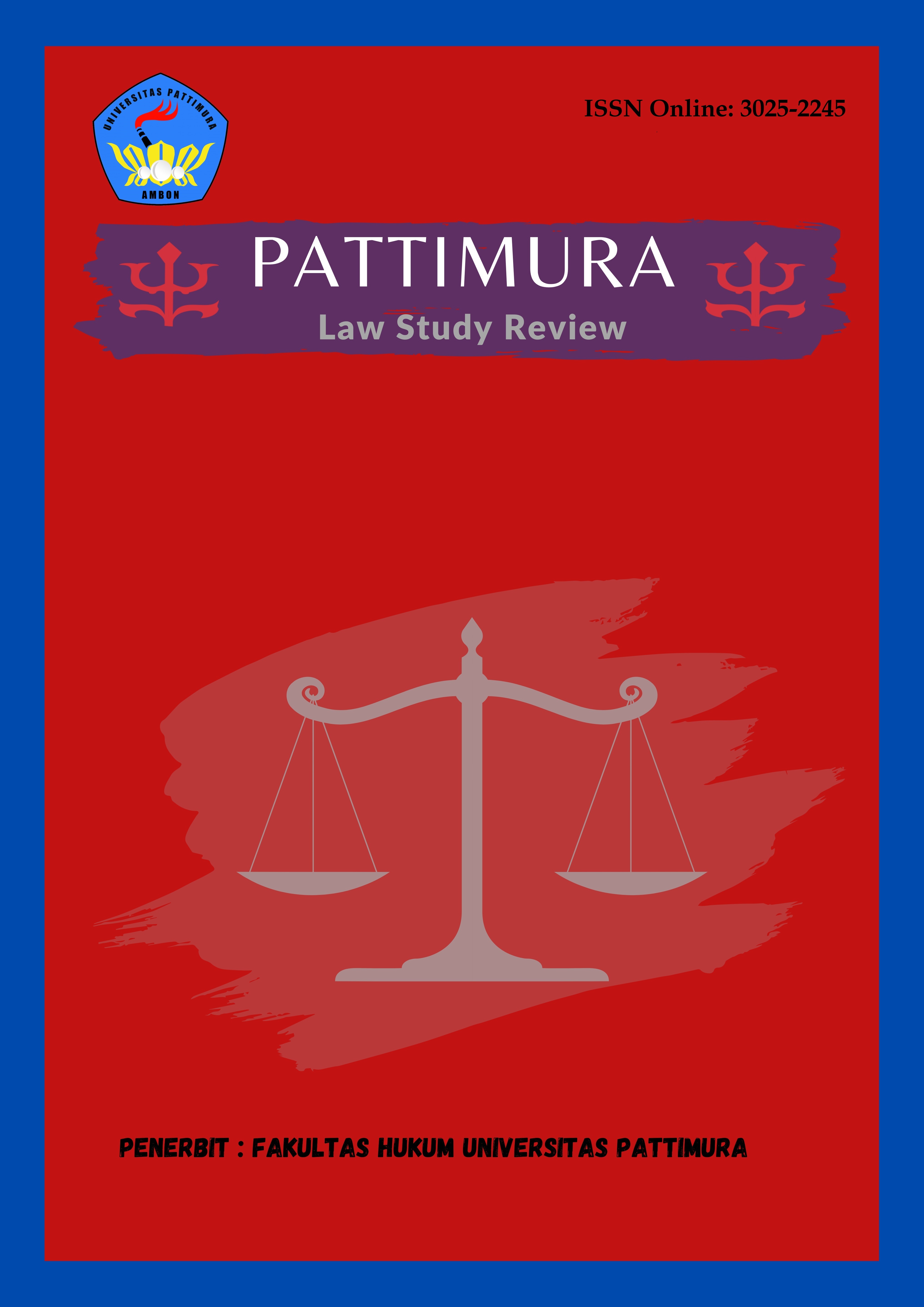Pelaku Tindak Pidana Pencabulan Yang Dilakukan Oleh Anggota Keluarga
Abstract
The crime of obscenity is a form of crime that has a serious impact on the victim, both physically, psychologically and socially. Juridical studies of criminal acts of sexual immorality are important to understand how Indonesian law regulates, protects and provides sanctions against perpetrators of these crimes. In the context of Indonesian criminal law, sexual abuse is regulated in the Criminal Code (KUHP) and special regulations such as the Child Protection Law. This article examines the elements of criminal acts of obscenity, the law enforcement process, and the obstacles faced by law enforcement officials in handling obscenity cases. Apart from that, efforts to protect victims and the role of the community in preventing this criminal act were also discussed. This study concludes with recommendations for improving regulations and more effective implementation of the law to provide justice for victims and prevent the recurrence of similar crimes. To find out the views of individualization theory, the views of individualization theory on criminal acts of sexual abuse and legal protection for children who are victims of family abuse. The research method in this research is normative juridical. The problem approaches used are the statutory approach, conceptual approach and case approach. From the results of this research, it can be concluded that sexual immorality is a crime which in Indonesian laws and regulations, if the elements of a criminal act of sexual immorality are met, criminal sanctions must be applied in accordance with the provisions of the applicable laws and regulations, namely Article 289 and supported by Law Number 23 of the Year. 2002 concerning Child Protection as a specialist leg of the Criminal Code. Meanwhile, legal protection for children who are victims of criminal acts of sexual abuse in accordance with statutory regulations stipulates the obligation to carry out rehabilitation efforts, namely in Article 6 of Law Number 31 of 2014 concerning Protection of Witnesses and Victims, as well as Article 69A of Law Number 35 of 2014. 2014 concerning Child Protection.
Downloads
References
Bramantha, dkk., “Tinjauan Yuridis Tindak Pidana Pencabulan Terhadap Anak”, Jurnal Analogi Hukum, Fakultas Hukum Universitas Warmadewa Denpasar Bali. Vol. 3, No. 3 (2021)
Juliana Ria, dan Ridwan Arifin, Anak dan Kejahatan (Faktor Penyebab dan Perlindungan Hukum), Jurnal Selat, Vol. 6, No, 2, (2019)
Kalensang, Jackmino Andrio. Hubungan Sebab Akibat (Causaliteit) Dalam Hukum Pidana Dan Penerapannya Dalam Praktek, Lex Crimen vol. 5. No 7, (2019)
Sampurna, Widiyas Agil. S Jurnal Cendekia Hukum: Vol. 5, No 1, September (2019)
Triwahyuningsih, Susina. “Perlindungan Dan Penegakan Hak Asasi Manusia (HAM) Di Indonesia Legal Standing,” Jurnal Ilmu Hukum 2, no. 2 (2018)
Buku
Adam Chazawi, Pelajaran Hukum Pidana 2, Raja Grafindo, Jakarta, 2009.
Bambang Sunggono, Metode Penelitian Hukum, PT RajaGrafindo Persada, Jakarta, 2003.
Dikdik M. Arief Mansur, Urgensi Perlindungan Korban Kejahatan Antara Norma Dan Realita, Raja Grafindo Persada, Jakarta, 2007.
Gadis Arivia, Potret Buram Eksploitasi Kekerasan Seksual pada Anak, Ford Foundation, Jakarta, 2005.
Hamzah Hasan, Kejahatan Kesusilaan Perspektif Hukum Pidana Islam, Alauddin University Press, Makassar, 2012.
Lilik Mulyadi. Peradilan Anak Di Indonesia, Teor, Praktek Dan Permasalahan. Mandar Maju: Bandung. 2005.
Moch. Faisal salam, Hukum Acara Pidana Militer di Indonesia, CV. Mandar Maju, Bandung, 2002.
NiasMisran Lubis DKK, Analisis Situasi Anak yang Berkonflik dengan Hukum di. Nias Pusat Kajian dan Perlindungan Anak, Medan, 2008.
Praptomo Baryadi, Bahasa, Kekuasaan dan kekerasan, Sanata dharma univerrty press, Yogyakarta 2012.
Sudarto, Hukum Pidana I, Yayasan Sudarto, Semarang, 2009.
Ria Juliana dan Ridwan Arifin, Vol. 6, No. 2, Tahun 2019, Anak dan Kejahatan (Faktor Penyebab dan Perlindungan Hukum), Jurnal Selat, hlm. 232
Yunicha Nita Hayim, Perlindungan Hukum Terhadap Anak yang menjadi Korban Tindak Pidana Pencabulan, Makasar 2014
Copyright (c) 2025 Dita Yuniar, Juanrico Alfaromona Sumarezs Titahelu, Patrick Corputty (Author)

This work is licensed under a Creative Commons Attribution-NonCommercial 4.0 International License.
Authors who publish their manuscripts in this Journal agree to the following conditions:
- The copyright in each article belongs to the author, as well as the right to patent.
- Authors are able to enter into separate, additional contractual arrangements for the non-exclusive distribution of the journal's published version of the work (e.g., post it to an institutional repository or publish it in a book), with an acknowledgment of its initial publication in this journal.
- Authors are permitted and encouraged to post their work online (e.g., in institutional repositories or on their website) prior to and during the submission process, as it can lead to productive exchanges, as well as earlier and greater citation of published work.
- Authors have the right to self-archiving of the article (Author Self-Archiving Policy)













